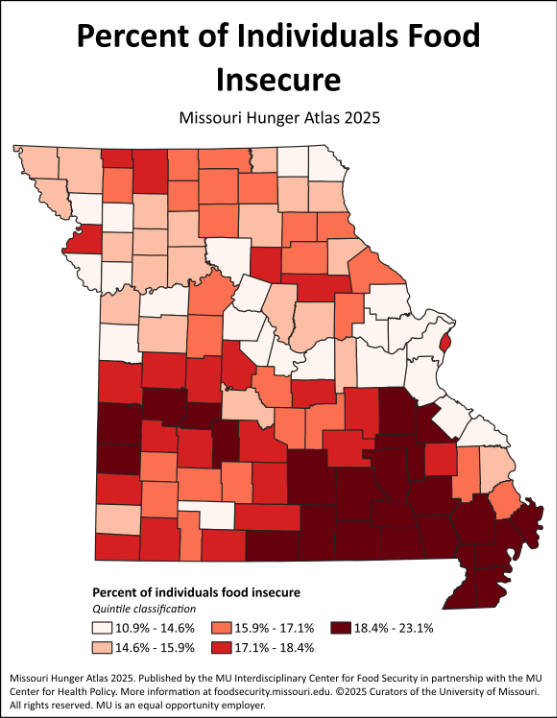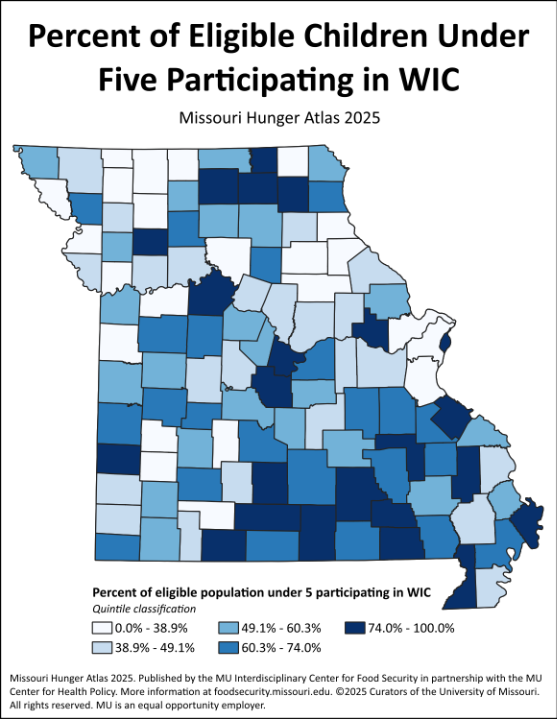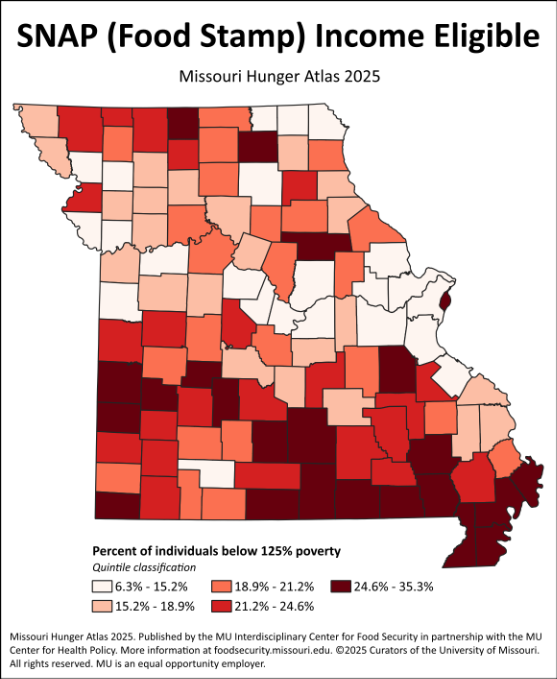COLUMBIA, Mo. — Food insecurity is on the rise in Missouri, according to the newly released 2025 Missouri Hunger Atlas.
Published every other year, the atlas tracks hunger trends in all of Missouri’s 114 counties and the City of St. Louis, providing local leaders, nonprofits and agencies with data they can use to guide resources and shape solutions.

“This is a tool to help decision-makers be more effective and efficient,” Bill McKelvey, co-author of the report, said. “It’s a dynamic document they can use to see the needs and find the most appropriate solutions for their communities.”
The 2025 edition, is now available online, at https://mailer.umsystem.edu/c/AQjOvBUQ6qEvGMqQjYYBIJ_52gvm1rHEuxpzNt6urUBdWm5AOcB0dMGGLATzpYDTPGrAfw
The Hunger Atlas shows that hunger rates increased from 2021 to 2023 as food prices and inflation rose and pandemic-era stimulus programs came to an end.

While the report is a snapshot of the past, McKelvey said it likely reflects the current landscape as well — and offers a launching point for action. McKelvey is program support coordinator for MU Extension’s Missouri EATS program which brings stakeholders together to address local food needs.
“The goal is to help communities have conversations about food systems in general,” McKelvey said. “We provide the framework for them to take action and make changes that work best in their areas.”
While the Hunger Atlas provides key data to guide local conversations, Missouri EATS takes a broader approach to strengthening the infrastructure that connects farms to tables. Communities involved in the program have expanded community gardens, launched farmers markets and improved coordination of emergency food services.

The Hunger Atlas is also a powerful tool for food pantries and local agencies to demonstrate need and advocate for resources.
“I hear from a lot of people that they use this resource to help counter food insecurity through grant applications and fundraising campaigns,” McKelvey said. “It’s an important tool for demonstrating the need in their own communities.”
About Mizzou
Mizzou is the flagship, land-grant university in Missouri. Counted among the leading research universities in America, the university is a member of the prestigious Association of American Universities and the Southeastern Conference, the premier athletics conference in the United States. Mizzou is ranked No. 4 Best Value among public flagships in the U.S., according to U.S. News & World Report. Within six months, 95% of Mizzou graduates are successful by securing jobs or continuing their educational endeavors. Mizzou’s researchers make significant impacts on the world, including developing life-saving cancer treatments at the University of Missouri Research Reactor — the only one of its kind in the Western Hemisphere. Home to more than 31,000 students, Mizzou is located in Columbia, Missouri — consistently named one of the best college towns in the country.
